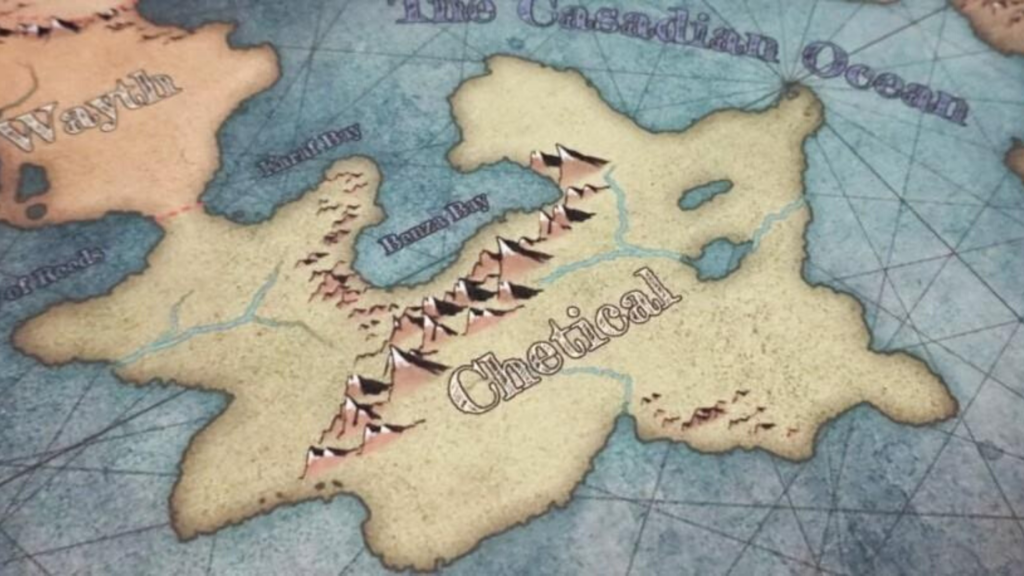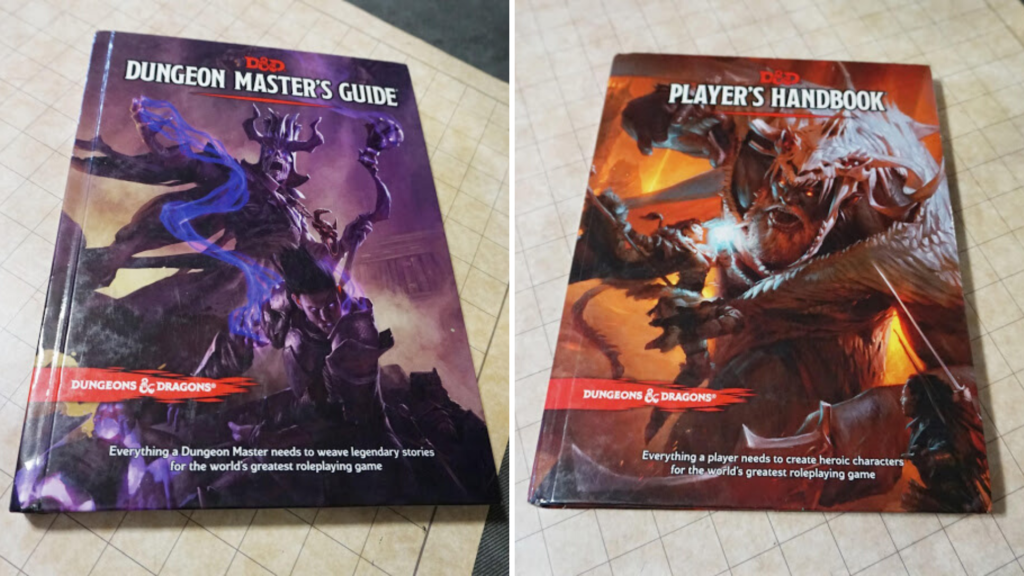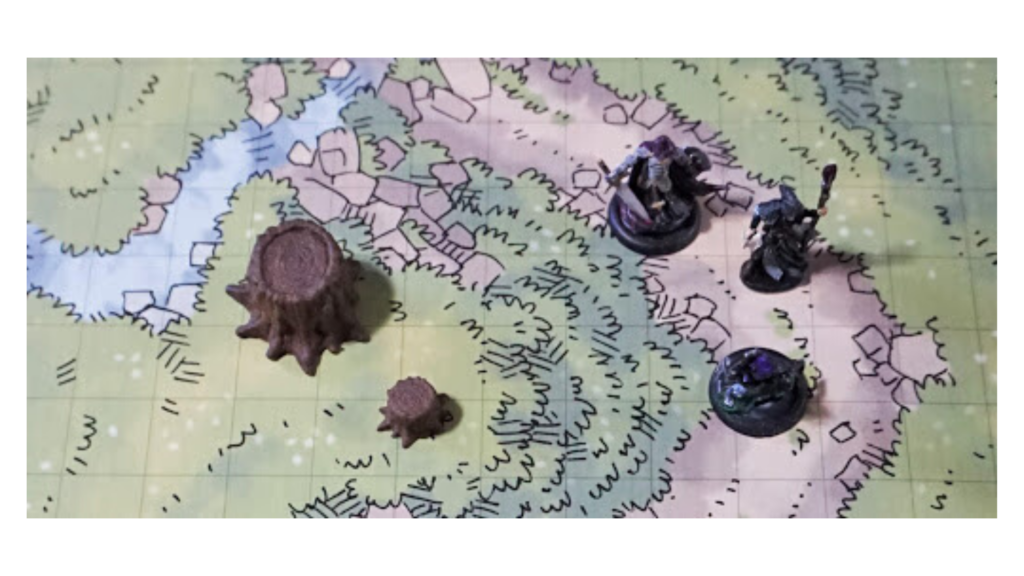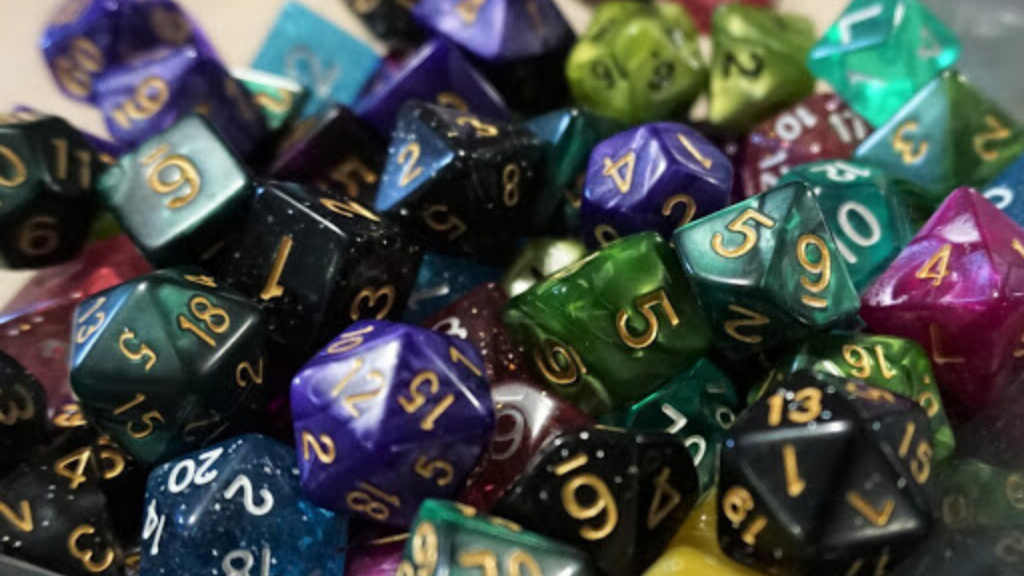Search EVPL
Learn the basics of Dungeons and Dragons
Dungeons & Dragons Explained
Do you consider yourself a storyteller? When you are immersed in a book or movie, do you find yourself imagining how you might have done something differently than the characters within? If so, Dungeons & Dragons may be the game for you.

There has been a huge resurgence in the popularity of Dungeons & Dragons (or D&D for short) partly due to shows like The Big Bang Theory and Stranger Things. Since its creation in 1974, the game saw it’s most profitable years in 2016 and 2017. Now more than ever people are sitting down to use teamwork and imagination to play roleplay games (RPGs) like D&D. When it comes down to it, D&D is really just a lot of collaborative storytelling! Today, we are going to break down the game of D&D into its most basic steps – we are not going to go in-depth on character building or rules. The goal is to give you a basic understanding of D&D and how it is played.

(Stranger Things/Netflix)
The Players
The game of D&D, and of most RPGs (Role-playing Game), consists of a few types of players.
The Dungeon Master or DM (also referred to as Game Master or GM) is the person in charge who sets the scene and guides the story.
Those playing the game are called player characters (PCs). They each create a character to navigate the game.
There are also non-player characters (NPCs). These side characters are played by the DM – characters that help guide the story along, like innkeepers, shop owners, or travelers. They may be allies or competitors to the PCs.
Tools of the Game
There are only a few tools needed to start playing D&D. PCs, for instance, need a character sheet and a set of dice. We are not going to go in-depth on character building today, but PCs have options when doing so. They can use D&D handbooks, such as the Player’s Handbook, to build their character using pen and paper. They can also use online player building tools like D&D Beyond, which will walk you through building a character. Each player uses a set of seven dice throughout the game for both roleplaying and combat.
Likewise, DMs have options when setting up a game, which is called a campaign. There are pre-made published games that DMs can purchase and use. These games are fully ready to play and give the DM locations, NPCs, monsters/villains, and a set adventure to guide the players. DMs can also create their own games, called homebrew campaigns, where they create everything from scratch. There are multiple published D&D books that DMs can use for both published and homebrew campaigns, such as the Dungeon Master’s Guide and the Monster Manual.

Playing the Game
When many people think of D&D, they think of fantasy characters (like elves and gnomes) in a medieval setting with medieval-type weapons. However, if your DM is homebrewing a world, the setting, time, and type of adventure could be literally anything. One online D&D group, Dimension 20, has a campaign set in a high school in the 80s – like a John Hughes movie. Another campaign they have done is set in modern-day New York City. We’ve seen games set in Walt Disney World, London, prehistoric times, and even space. If you are not keen on playing in a traditional setting, a game like one of these might be more interesting to you.
Whatever type of game the DM chooses, the structure of playing the game is the same. After the DM sets up the scene, which may provide players with a specific adventure or set of goals, the players will play the game in two basic ways: roleplaying and combat.
While roleplaying, players will make their way through settings, asking questions and working together to meet goals. With each question asked, the DM may ask you to roll your dice to see how much of an answer they will give you.
During combat, dice are used again to attack your enemy. You roll the dice to see if you have hit the enemy with whatever weapon you are using, and you roll another dice to see how much damage you have done to the enemy. The type of dice you use depends on the character you have built and the types of weapons they use.
The point of the game is to complete quests – you might have one big, main quest and some smaller side quests. Maybe you are trying to solve a mystery and defeat a major enemy, but along the way, you face other battles. Think of it kind of like a Choose Your Own Adventure book – the DM will set a scene and allow the PCs to navigate the scene together to reach a goal by making decisions.

Let’s Play!
You may have had some preconceived notions about D&D, be it about the game itself or the people who play. I hope that reading this allowed you to learn more about what D&D is all about. RPGs like D&D are a lot of fun and can be adapted for all ages of people – all you need is teamwork and your imagination.


Katherine E.
With 8 locations throughout Vanderburgh County, EVPL is ready to discover, explore, and connect WITH you! We encourage you to uncover new things, revisit old favorites, and to engage with us along the way.
200 SE Martin Luther King Jr. Blvd
Evansville, Indiana 47713
Administration: ceo@evpl.org
Card & Account: circulation@evpl.org
Feedback & Ideas: marketing@evpl.org



